The Impact of Religion on Human Flourishing
International research shows that religious practices in the home were the strongest predictor of marital happiness.a
Religious attendance specifically is linked to marital satisfaction, less likelihood of divorce, and a stronger inclination toward marrying.b One study beautifully stated that significant relationships were found “between stronger religiosity and greater likelihood of marriage, and between marriage and stronger religiosity in the transition from emerging to established adulthood. Significantly larger effects in both directions were observed for men than for women. We conclude that while both religiosity and marriage have declined in the population, an increasingly narrow but distinctive subset of individuals simultaneously maintain traditional religious orientations and a proclivity to marry by established adulthood.”c
Beyond the marriage, couples who adopt a “we-before-me” mentality and have children have increased marital fulfillment.d Though fertility rates are dropping around the world and particularly in first-world societies, devoted religious practice was also found to be an indicator of an average increase in the number of children per family.d
For men, religious activity is associated with stronger relationships and greater investment in their relationships with their children. Fathers who attended church weekly were the most active and emotionally engaged fathers, and their wives reported feeling more appreciated and more satisfied with the affection, love, and understanding they felt from their husbands.f
Additional Resources:
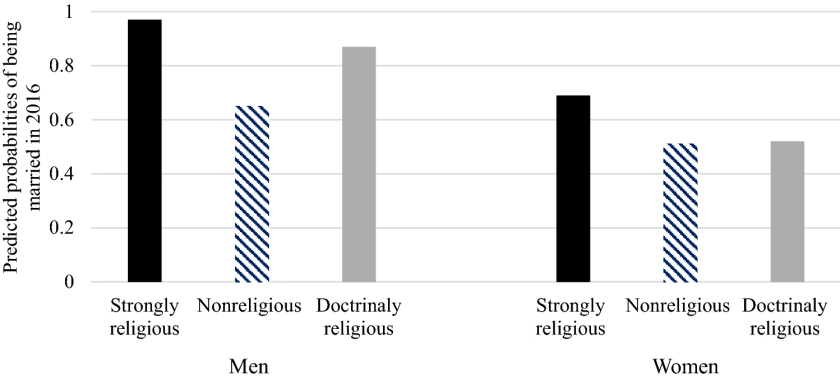

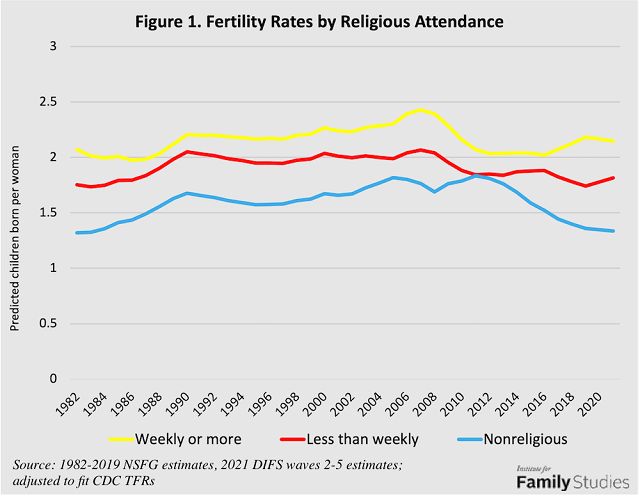
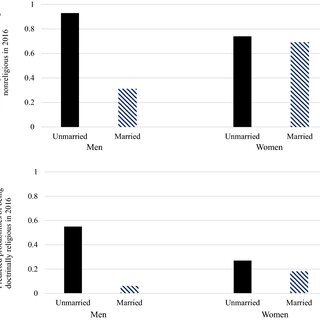
(a) Wheatley Institute. (2022, August 21). World family map 2019: The ties that bind. Wheatley Institute. https://wheatley.byu.edu/the-ties-that-bind
(b)World Family Map 2019. Institute for Family Studies and the Wheatley Institute. (2019). https://ifstudies.org/ifs-admin/resources/reports/worldfamilymap-2019-051819final.pdf
(c) Silverstein, M., Hwang, W., Kim, J.-H., Yoon, J., & Vasilenko, S. A. (2022, July 2). The relationship between religiosity and marriage from emerging to established adulthood - journal of adult development. SpringerLink. https://link.springer.com/article/10.1007/s10804-022-09416-5
(d) Wilcox, W. B. (2024). Get married: Why Americans must defy the elites, Forge Strong Families, and Save Civilization. Broadside Books. https://www.amazon.com/Get-Married-Americans-Families-Civilization/dp/0063210851
(e) Wilcox, B. (2004, May 1). Soft patriarchs, New Men. University of Chicago Press. https://press.uchicago.edu/ucp/books/book/chicago/S/bo3623927.html
(f) Stone, L. (2022, August 22). America’s growing religious-secular fertility divide. Institute for Family Studies. https://ifstudies.org/blog/americas-growing-religious-secular-fertility-divide
Involvement in religion is shown to significantly improve physical health, largely due to the health habits encouraged by most religious traditions. Compared with those who never attend religious services, individuals who attend services at least once a week have a lower risk of:
- All-cause mortality by 26%
- Heavy drinking by 34%
- Smoking by 29%
- Depression by 16%.
This could account for the new studies reporting that those with religious affiliations “live four years longer than those with no ties to religion.”a
Religious participation and religious institutions also play an important role in countering addiction.
- 73% of all substance treatment programs have a faith component, as typified by 12-Step Programs pioneered by Alcoholics Anonymous
- 84% of studies find that faith reduces drug abuse risk
- 86% of studies find that faith reduces alcohol abuse risk
- Up to 82% of clients who experience a spiritual awakening during substance abuse treatment and recovery were completely abstinent at a 1-year follow-up (55% of non-spiritually awakened clients)
- Religious youth are three times less likely to binge drink
- For teens with SUD, 62% cite staying connected with God as the top reason for staying sober after rehab.
The studies of religious impact on mental health are similarly encouraging. Attending religious services at least once/week is significantly associated with:
- Fewer depressive symptoms
- Less physician-diagnosed depression
- Lower levels of anxiety, hopelessness, and loneliness
- Greater positive feelings
- Greater life satisfaction
- Higher social integration
- Increased sense of purpose.b
This aligns with many other studies including those that show the association of religious affiliation with suicide rate/ideation. One scholar estimates that nearly "40% of the increase in the suicide rate could be attributed to the decline in religious service attendance.”b
Related, a decline in religious service attendance is often associated with increased risk factors, such as lower levels of purpose and meaning and higher loneliness. The social integration provided by religious-service attendance alternatively relates to “greater longevity, healthier behaviors, better mental health and greater psychosocial well-being.”c
Specific to youth, we see these same outcomes in connection to religious activity. Religious involvement in adolescence is shown to bring the following aspects of psychological well-being in young adulthood:
- Greater life satisfaction and positive emotions while engaged in religious practice
- Daily prayer is associated with more positive emotional feelings, emotional processing, and emotional expression.
Interestingly, these findings hold true for LGBTQ youth and adults as well, which counters popular narratives that pit religion against those that identify as LGBTQ. Looking again at suicide, heterosexual LDS teens in Utah had a suicide ideation rate of 13% while heterosexual teens in Utah with no religion had a suicide ideation rate of 22%. LDS teens in Utah that identify as LGBTQ had a suicide ideation rate of 28% while those who identified as LGBTQ with no religion had a suicide ideation rate of 49%.
When looking at the mental health of university aged students, religious students and students at religious schools were shown to have a stronger state of mental health. This was true as well for LGBTQ students as well as non-religious students, likely due to the protective qualities of religion (community environment, natural support networks, less risky behaviors, etc.). Religious students reported strong mental health at various kinds of universities, likely carrying the protection of their religion with them.
Additional Resources:
- "As was found with a national random sample of 20,014 adults, attending religious services at least twice a month predicted 94% less likelihood of death by suicide.” Source
- “Religious involvement appears to benefit mental health through multiple mechanisms - psychological, social, and behavioral. The psychological pathways through which religious involvement improves mental health range from providing strategies for coping with stress, to enhancing positive emotions through healthful practices, and bringing meaning to life and challenges. The social pathways include meaningful social networks of connection and support, a strengthened sense of belonging, and greater marital and family stability which is one of the strongest social determinants of mental health.” Source

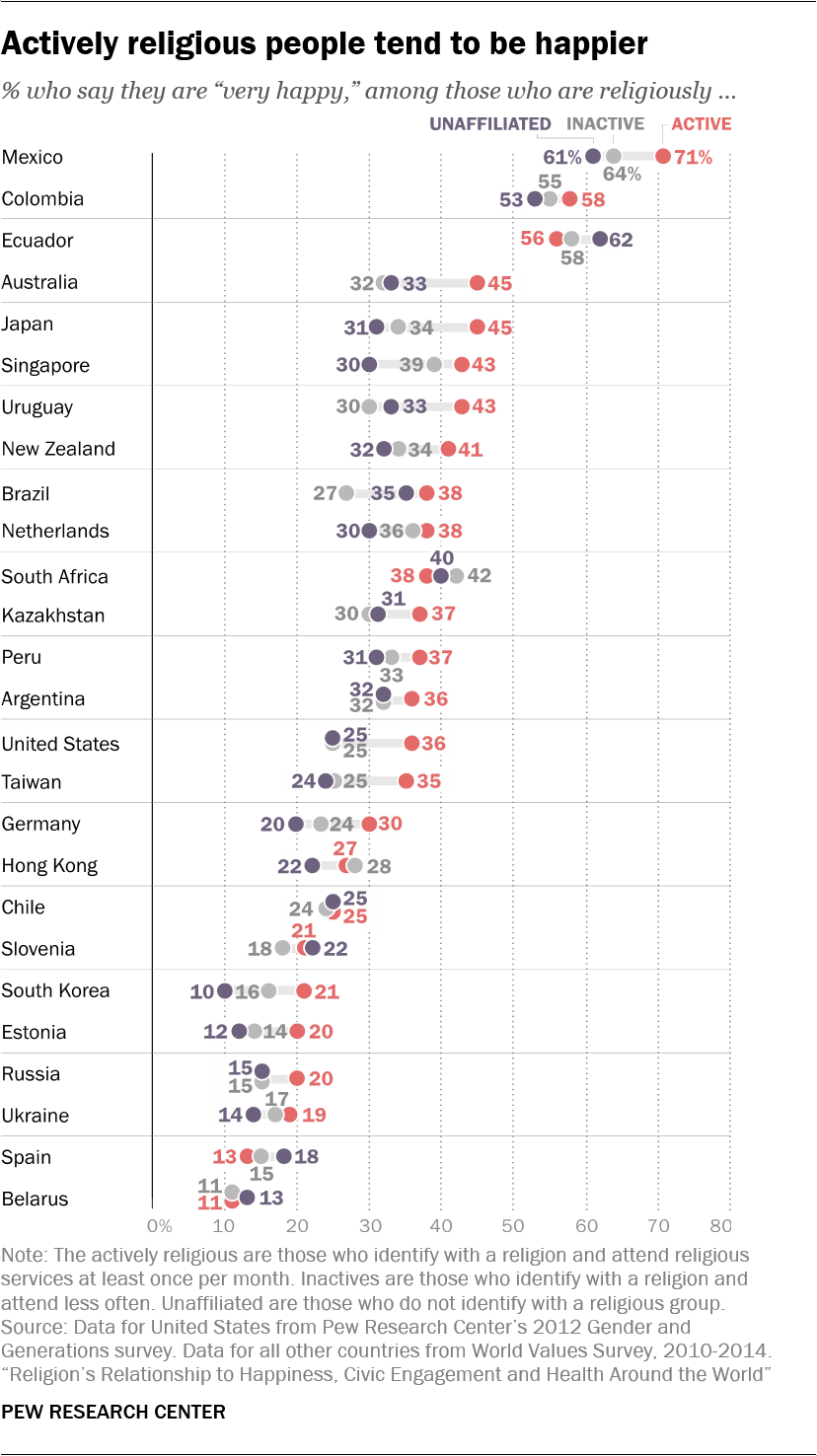



(a) Wallace, L. E., Anthony, R., & Way, B. M. (2018, June 13). Does Religion Stave Off the Grave?. Sage Journals. https://doi.org/10.1177
(b) ”Tyler J. VanderWeele, Shanshan Li, and Ichiro Kawachi, “Religious Service Attendance and Suicide Rates—Reply,” Letters: Comment and Response, JAMA Psychiatry 74, no. 2 (February 2017): 198. https://pubmed.ncbi.nlm.nih.gov/27902831/
(c) Chen, Y., Kim, E. S., & VanderWeele, T. J. (2020, August 13). Religious-service attendance and subsequent health and well-being throughout adulthood: Evidence from three prospective cohorts. OUP Academic. https://academic.oup.com/ije/article/49/6/2030/5892419
Religion is also associated with various aspects of social cohesion, such levels of happiness and purpose of individuals in society, civic participation, and decreased levels of crime.
Three core aspects of social cohesion are directly impacted by religiosity: civic engagement, recidivism, and human flourishing. Religious individuals are also more likely to be involved in social or community groups, as well as more likely to vote.a Both of these aspects of civic engagement hold true across the world. Societies with higher home religious observance are shown to experience lower levels of crime.b Happiness and meaning are important for social cohesion within communities, workplaces, and the nation. Religious and home worshippers in particular, are more likely to feel life happiness and meaning.c
Religious people are well positioned to engage in peacemaking activities: “Qualitative research indicates that religious leaders and religious people are often credible peace brokers who are respected in their communities, have ready access to cultural peace promoting concepts like reconciliation and forgiveness, and may be motivated by non-partisan factors like fulfilling religious obligations or furthering God’s will.”d Related is what we see in often contentious settings, like university settings where “canceling” has become more and more common. Religious people, starting with members of the Church, are much less likely to engage in such behaviors.e
Additional Resources:



(a) Mitchell, T. (2019, January 31). Religion’s relationship to happiness, civic engagement and health around the world. Pew Research Center. https://www.pewresearch.org/religion/2019/01/31/religions-relationship-to-happiness-civic-engagement-and-health-around-the-world
(b) Jang, S. J. (2011). The effects of childhood exposure to drug users and religion on drug use in adolescence and young adulthood. American Psychological Association. https://psycnet.apa.org/record/2011-28067-002
(c) Study Sheds Light on Benefits of Home-Centered Religious Practice. Wheatley Institute. (2022a, December 13). https://wheatley.byu.edu/00000185-08a5-dc16-a9f5-2ba7c1ed0001/not-so-good-faith-estimate-release-docx
(d) Glazier, Rebecca A. (2018) "How Religion Influences Peacemaking," Peace and Conflict Studies: Vol. 25: No. 2, Article 3. https://nsuworks.nova.edu/pcs/vol25/iss2/3
(e) Burge, R. (2024, September 23). How do college students feel about free speech. graphsaboutreligion.com. https://www.graphsaboutreligion.com/p/how-do-college-students-feel-about
Religious participation is associated with greater development of virtues among individuals and groups.
Various virtues have been shown to be especially developed in individuals who regularly practice religion. For example, religious involvement is associated with greater levels of forgiveness and gratitude in various aspects of life, including forgiveness towards one’s self, peers, community, institutions, and society. “The behavioral pathways through which religion facilitates strengthened mental health include its fostering of prosocial behaviors (e.g., gratitude, compassion, forgiveness, altruism, and self-control).”a Religious participation has also been linked to greater levels of kindness and community service.
In summary, “Participation in religious services is associated with numerous aspects of human flourishing, including happiness and life satisfaction, mental and physical health, meaning and purpose, character and virtue, and close social relationships.”b
“The behavioral pathways through which religion facilitates strengthened mental health include its fostering of prosocial behaviors (e.g., gratitude, compassion, forgiveness, altruism, and self-control) that are “robustly associated” with positive relational and mental health outcomes.”a
(a) Schnitker, S. A., & Emmons, R. A. (2017). The psychology of virtue: Integrating positive psychology and the psychology of religion.Psychology of Religion and Spirituality, 9(3), 239–241. https://doi.org/10.1037/rel0000133
(b) VanderWheele, T. J. (2017, October 11). Religious communities and human flourishing. Sage Journals. https://journals.sagepub.com/doi/10.1177/0963721417721526
Religious congregations, schools, charities, health care institutions, and higher education institutions contribute significant economic value. Churches and religious organizations are often directly involved in addressing economic needs. Religious institutions are estimated to have contributed $1.2 trillion to the United States economy each year. a

In contrast, economic growth has slowed around the world where we have seen a decline in religious freedom.b

Religion’s emphasis on hard work, self-reliance, and strong families provides the foundational principles and structures for thriving capitalist economies. Two-parent households are shown to have consistently stabilized neighborhoods and generational prosperity.
Greater income mobility, defined by individuals moving from low to high socioeconomic levels, is consistently higher in more religiously active communities. The number one predictor of economic mobility is having friends in a higher social class, often referred to as economic connectedness. “Friending bias is negative in religious groups because religious-group friendships do not exhibit substantial homophily by socioeconomic status.”c
Religion’s emphasis on self-improvement and education is also a likely contributor to the economic strength seen in religious societies.
Additional Resources:
Article: Religions, poverty reduction and global development institutions

Source: The Price of Freedom Denied, Brian J. Grim and Roger Finke, 2011
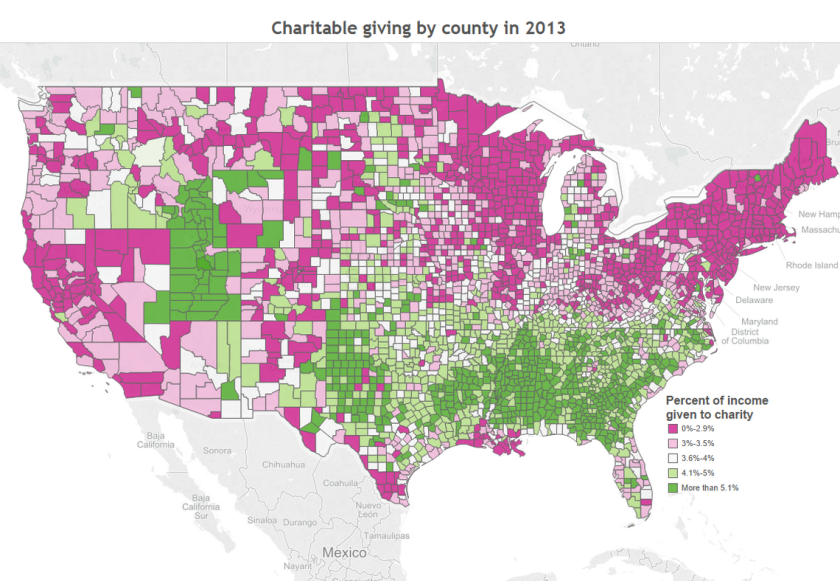
(a) Grim, B. J. (2016). The Socio-Economic Contributions of Religion to American Society. Religious Freedom & Business Foundation. https://religiousfreedomandbusiness.org/wp-content/uploads/2020/04/1.2-trillion-US-Religious-Economy-2-page-summary.pdf
(b) Grim, B. J. (2019). Economic growth slowed by decline in religious freedom. RFBF. https://religiousfreedomandbusiness.org/economic-growth-slowed-by-decline-in-religious-freedom
(c) Brooks, D. (2022, August 4). What is it about friendships that is so powerful?. The New York Times. https://www.nytimes.com/2022/08/04/opinion/friendships-economic-mobility-class.html
- A Not-So-Good Faith Estimate: Why Many Studies Underestimate the Full Benefits of Religion
- How Boston became the safest big city in America
- Faith and Wellness: The Worldwide Connection between Spirituality & Wellbeing
- Promising Revelations: Undoing the False Impressions of America’s Faithful
- What Good Does Religion Do? Social Benefits of Religion
- The Impact of Religion and Religious Organizations
“Of all the dispositions and habits which lead to political prosperity, religion and morality are indispensable supports.”





